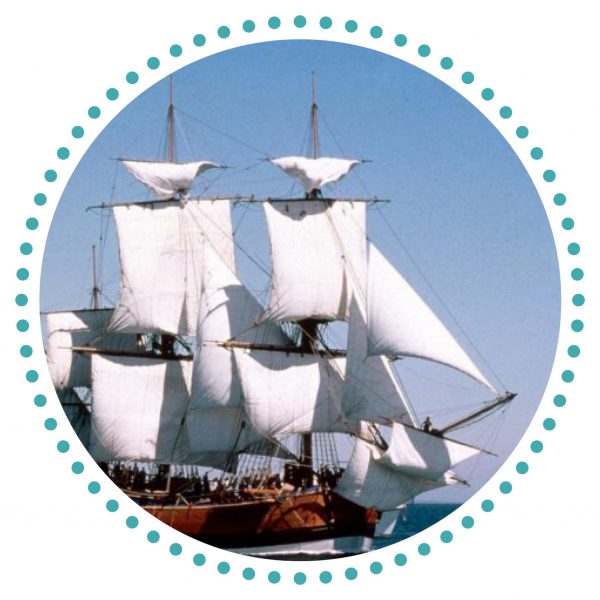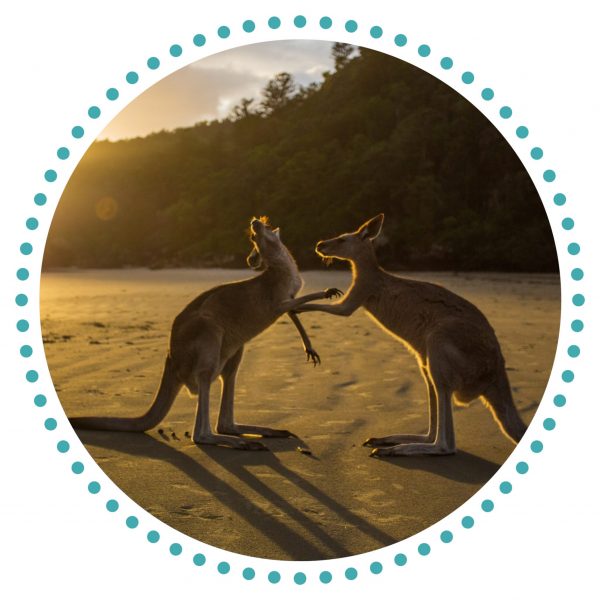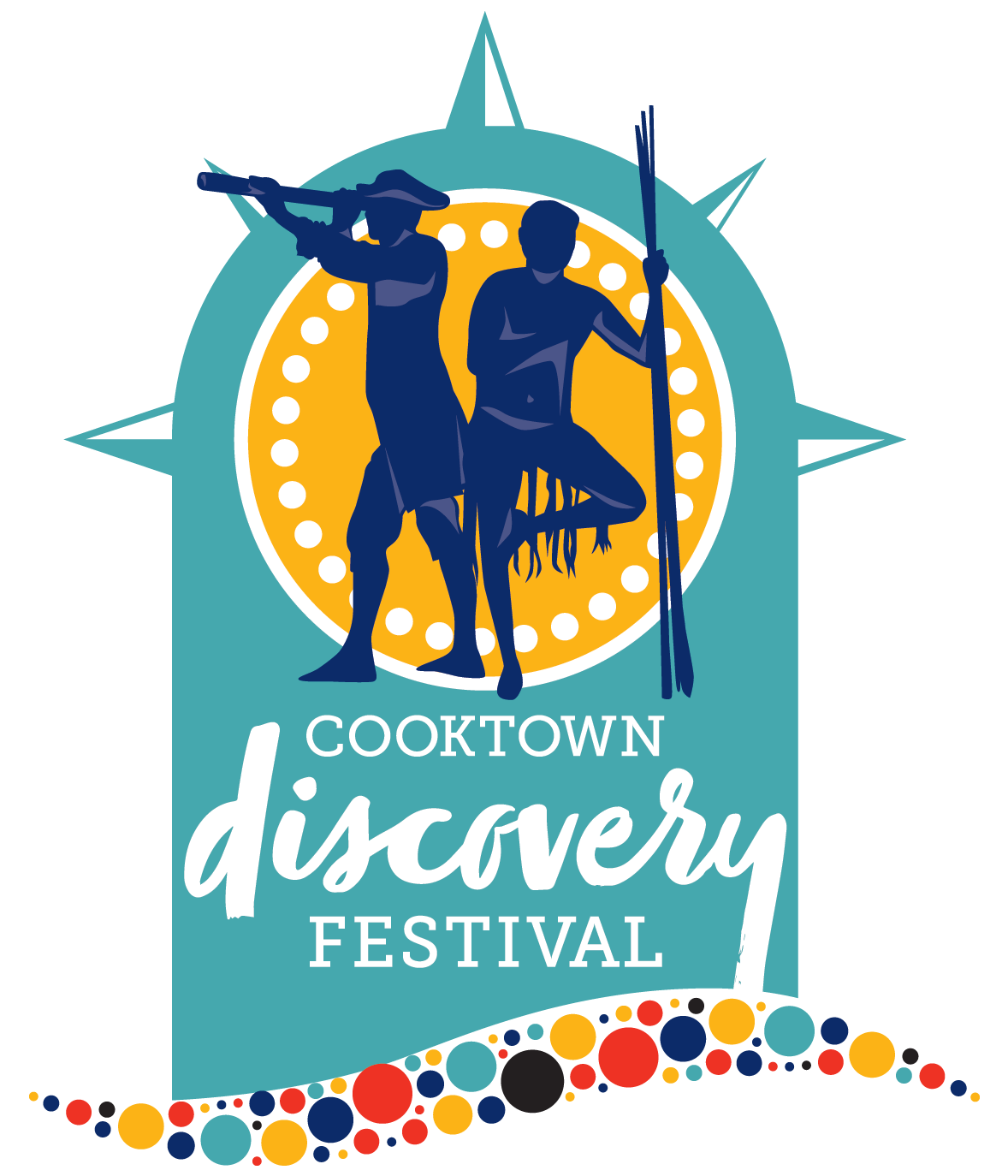Our Story
Our Shared Story
The place where Cooktown now stands was originally called Gan-Garr, after the word gun-gaar which is a type of white crystal quartz found in the area. Gan-Garr was part of the estate of Waymburr. Cook sailed into Waalmbal Birri, now known as the Endeavour River, on 17 June 1770. Waymburr, one of 32 clan lands of the Guugu Yimithirr tribal nations was a neutral zone where surrounding clans would come together for cultural ceremonies and mediations. It was law that no blood was to be deliberately spilled on this land– allowing unthreatening interaction and respect. Had Cook landed on the other shore of the Endeavour River, the story of Australia as it is today may have never even begun.

Cook’s Landing in Cooktown (Waymburr)
The Endeavour and its crew of 86 men spent 48 days (seven weeks) in Cooktown, previously known as Waymburr – the longest and most significant land-based stay during Cook’s east coast expedition.
Cook’s long stay in Cooktown was due to The Endeavour hitting the Great Barrier Reef on high tide, damaging the ship and waiting for optimal sailing conditions. Cook and his crew landed in a neutral zone of Waymburr which by law no blood was to be spilled on the land.
During this time, Cook and his crew walked the shores of the Endeavour River, climbed Grassy Hill and other ranges, made numerous flora and fauna discoveries, communicated with Indigenous locals and explored the extensive coastline as they searched for safe passage out through the reef.
"
From what I have seen of the Natives of New-Holland they may appear to some to be the most wretched people upon Earth, but in reality they are far happier than we Europeans.
– Excerpt from Cook’s Journal
"
Mutual Respect in Cooktown (Waymburr)
Over the 48 day stay – the longest time Europeans had ever spent on Australian soil, genuine communication was established between the crew and the Bama Ngay (local Indigenous Australians) both on Waymburr soil and aboard the Endeavour.
Whilst on board, an altercation between the Bama Ngay and Cook’s crew arose over the capture of turtles. The Bama Ngay were offended by Cook’s refusal to release the turtles caught by his crew which resulted in grass fires being lit and one Bama being shot in the leg. The indigenous people knew the importance of not taking turtles during breeding season.
The wisdom of a Bama elder referred to as the ‘little old man’ ensured that the rift was quickly healed and the first recorded act of reconciliation in Australia was recorded with the presentation of a broken spear tip.
"
We followed them for near half a mile and then set down and call’d to them and they stopped also; after some unintelligible conversation had passed they lay down their darts and came to us in a very friendly manner; we now returned the darts we had taken from them ‘which reconciled everything.
– Excerpt from Cook’s Journal
"
Scientific Discoveries
On board with Cook’s crew were a number of scientists, led by Sir Joseph Banks. During their time on land 325 plant specimens – over half the known species today were collected.
Also recorded were the first sightings of kangaroo, crocodile, flying fox, dingo, possum as well as different species of fish, birds and shells.
The skills of botanist Dr Daniel Solander and artist Sydney Parkinson were vital to the success of Banks’ botanical discoveries. During the voyage, Parkinson’s work included over 900 drawings and 250 watercolours which resulted in almost 700 engraved plates.
"
The first sighting of the kangaroo occurred in Cooktown, traditionally called ‘gangurru’ by Guugu Yimithirr tribe. “In gathering plants today. I myself had the good fortune to see the beast of so much talk of… he was not only like a greyhound in size and running, but had a long tail, as long as any greyhounds; what to liken him I could not tell, nothing certainty that I have seen at all resembles him.
- Excerpt from Joseph Bank’s Journal
"


The only Guugu Yimithir man whose actions were recorded individually in any of the journals described as an elder referred to as ‘the little old man’. He is credited with the initiation of the first ever act of reconciliation between Indigenous Australians and Europeans following the skirmish aboard the Endeavour when Cook refused to let Bama Ngay take turtles.

Cook sailed into Waymburr (Cooktown), one of the 32 clan lands of Guugu Yimithirr tribal nations, which was a neutral zone where tribes would come together for ceremonies and mediation. It was law that no blood was to be spilled on this land. Cook and his crew had several interactions with the local Bama Ngay learning about one another.

Commander of His Majesty’s Bark Endeavour at 40 years of age, Captain James Cook sailed the Pacific Ocean and embarked on three epic voyages around the world in 11 years. He arrived in Cooktown 10th June 1770 and remained there for 48 days discovering new language, flora, fauna and participating in the first act of reconciliation between Indigenous Australians and Europeans.

Joseph Banks was advisor to King George lll and urged the Monarch to support voyages of discovery to new lands, indulging his own interest in botany. Appointed to the South Pacific Ocean expedition at age 25 years, Banks was a part of the botanical team identified the first major collection of Australian flora, describing many species new to science.

Dr Daniel Carl Solander was a professor of botany, who was employed by Joseph Banks and assistant Herman Sporing to join the scientific team on Cook’s voyage. Solander, aged 35 years, was vital to the success of the botanical team with his ability to identify plant species and describing the important collection of Australian plants.

Sydney Parkinson aged 25 years was an honest and pious young man, who was employed by Joseph Banks to join the team of naturalists on Endeavour’s circumnavigation of the globe. He was one of two artists taken on the voyage and had to carry out the majority of the work, due to his colleague dying not long into the voyage.
If you’d like to learn more about the history and culture
